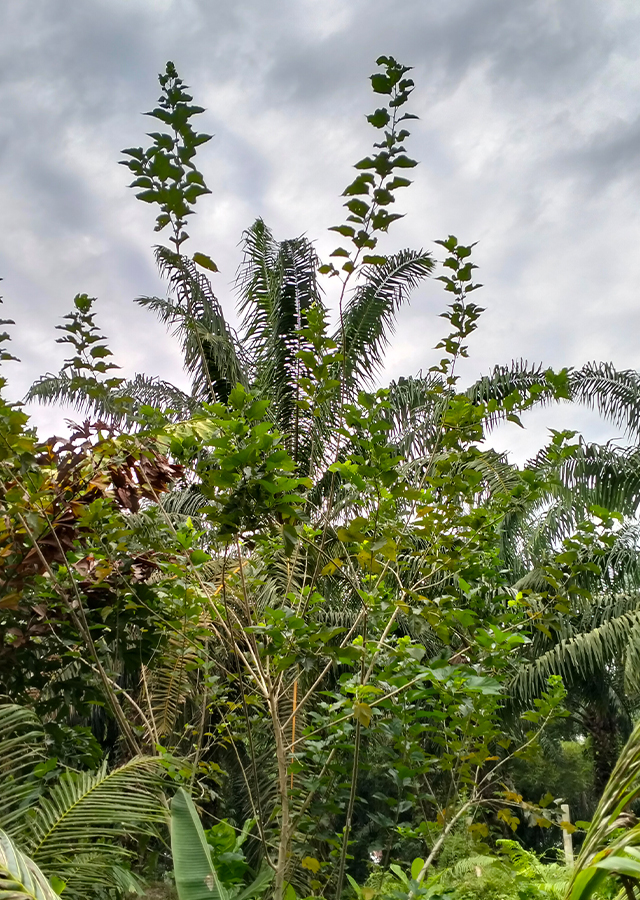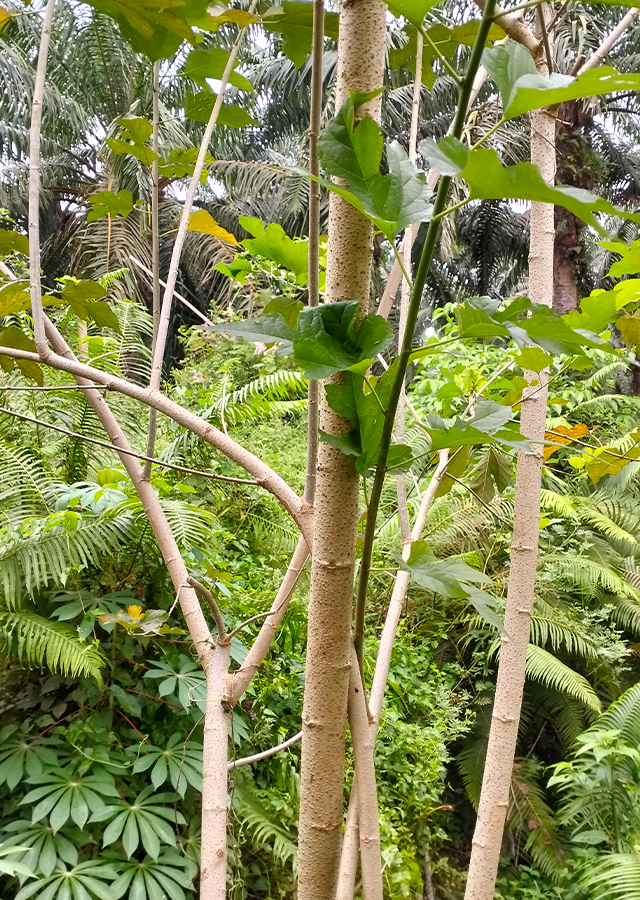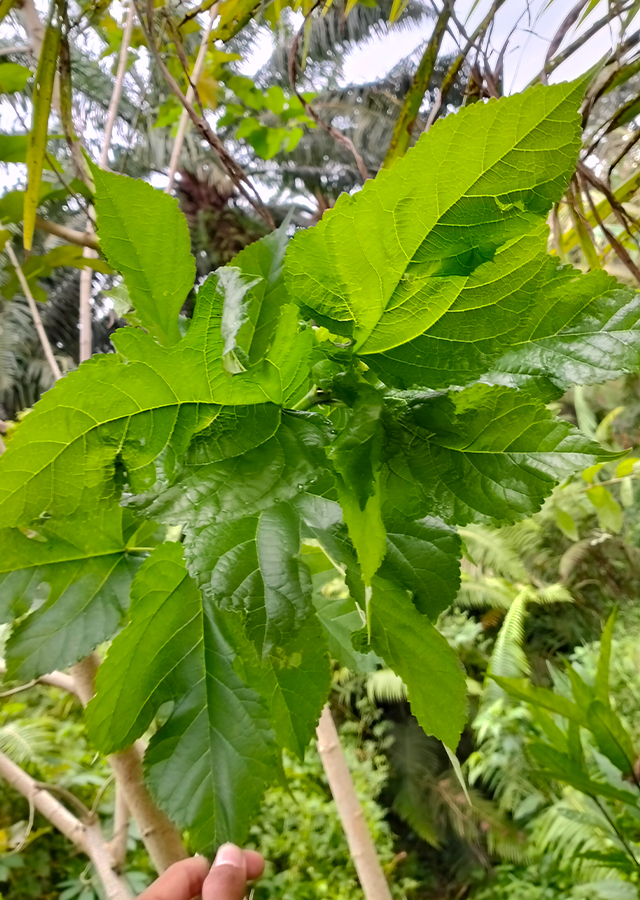Traditional Herbs from Broussonetia papyrifera
dysentery
- Prepare enough fresh daluang leaves, wash them until clean.
- Blend until they become juice
- Strain then drink.
treat_insect_bites
- Take enough fresh daluang leaves wash them until clean.", "Crush until it becomes a paste.
- Pulse on insect bites.
What is Broussonetia papyrifera Looks like??



Parts of Broussonetia papyrifera that could be used
- Leaves", "Bark", "Sap", "Twigs
Broussonetia papyrifera Distribution
Daluang is thought to originate from China, Japan, Korea, Laos, Cambodia, Thailand, Burma, Assam (India), and has been widely cultivated in Asia and the Pacific, as well as naturalized in several countries in southern Europe and the United States. Its distribution in Indonesia includes Sumatra, Java, Sulawesi, the Lesser Sunda Islands (Flores, Timor, Alor and Wetar, Maluku). This plant has been cultivated, mainly as a source of fiber for cloth and paper, food, medicine, soap and varnish making materials, shade plants, and ornamental plants. For centuries, fibers from the inner bark of the daluang have been used to make paper in Japan and textiles throughout the Pacific. To this day, the resulting cloth (tapa cloth) is the main source of clothing worn on Pacific islands such as Fiji, Tonga, Tahiti and is still worn on ceremonial occasions, during festivals and for traditional dances. In China, the leaves are used as food for silkworms. Daluang has edible fruit, and the young leaves can be consumed cooked or steamed. Apart from that, this plant has many health benefits and is often used by people in traditional medicine, especially in China and Korea. Daluang plant extract has been described by the Korea Food and Drug Administration (KFDA) as a traditional Korean medicinal ingredient.Agroecology of Broussonetia papyrifera
This plant can be found growing well in mixed forests, forest edges, along rivers in subtropical and warm and humid climates, at an altitude of 0-1,600 m above sea level. Its growth prefers well-drained soil, sandy soil and light soil, acidity (pH) in the range of 5-7.5 but tolerates 4.5-8, as well as a position in full sun, temperature range 0-40 °C , annual rainfall ranges from 700-2,500 mm.
Morphology of Broussonetia papyrifera
- The roots have jagged roots or rhizomes with roots that are not very deep.
- Cylindrical stem, 50-70 cm in diameter, milky white gum. Bark is light gray, smooth, with shallow gaps or ridges, bark the inner wood consists of hard interwoven fibers.
- Leaves rough (covered with fine hairs when young), stemmed, serrated leaf edges, base heart shape to rounded, tip tapered or slightly pointed, dark green on the sides The top and bottom are paler green and hairy, the leaves are alternate or opposite in shape. Some leaves have deep lobes, some are not lobed (even on the same leaf). Male and female flowers are borne on separate plants, female flowers are pistils that form a rounded head, perianthium tubular, hairy to tomentellous, filiform, 7-10 mm long, solitary in leaf axils or under leaves while the male flowers are solitary or usually in groups on short shoots, yellowish white, spiny, 4-lobed perianthium, hairy, 4 stamens.
- The fruit is round or pear-shaped, reddish shiny, fleshy, compound with achenes hanging on the stem." ,"Small seeds, flat cotyledons, and long radicles.
Cultivation of Broussonetia papyrifera
- Propagation is carried out generatively (seeds) and vegetatively (cuttings, root saplings).
- Germination usually occurs within 1-3 months at a temperature of 15 \u00b0C.
Broussonetia papyrifera, more details :
Chemical Content of Broussonetia papyriferaBroussonin A, broussonin B, kazinol F, broussochalcone A, 1-(2,4-dihydroxyphenyl)-3-(4-hydroxyphenyl)-propane, 1-(4-hydroxy-2-methoxyphenyl)-3-(4-hydroxy -3-prenylphenyl)-propane, isolicoflavonol, broussochalcone B, broussoflavonol A and B, broussoflavonol C, D, E, and F, butyrospermol acetate, erythrinasinate, papyriflavonol A, lignoceric acid, marmesin, octocosan-l-ol, squalene, 7-hydroxycoumarin, protocatechuate acid, ferulic acid, protocatechuic acid, epicatechin.
Benefits of Broussonetia papyrifera
Treatment of gonorrhea, ascites (accumulation of fluid in the abdominal cavity), menorrhagia (menstrual bleeding in large amounts), anuria (a disorder where the kidneys cannot produce urine), dysentery, treating wounds and insect bites, skin disorders, eye disorders and impotence, is excretory sweat and laxative, diuretic, hemostatic, anti-inflammatory, antiasthmatic, antioxidant, anticancer, antinociceptive, antimicrobial.
Simplisia of Broussonetia papyrifera
Another Facts for Broussonetia papyrifera :
Synonym of Broussonetia papyriferaBroussonetia billardii Carruth., Broussonetia cordata Blume, Morus papyrifera L.
Habitus of Broussonetia papyrifera
Bush. Shrubs or small trees, annual, ranging in height from 10-20 m
Habitat of Broussonetia papyrifera
- Riverside", "Forest", "Land
No comments:
Post a Comment